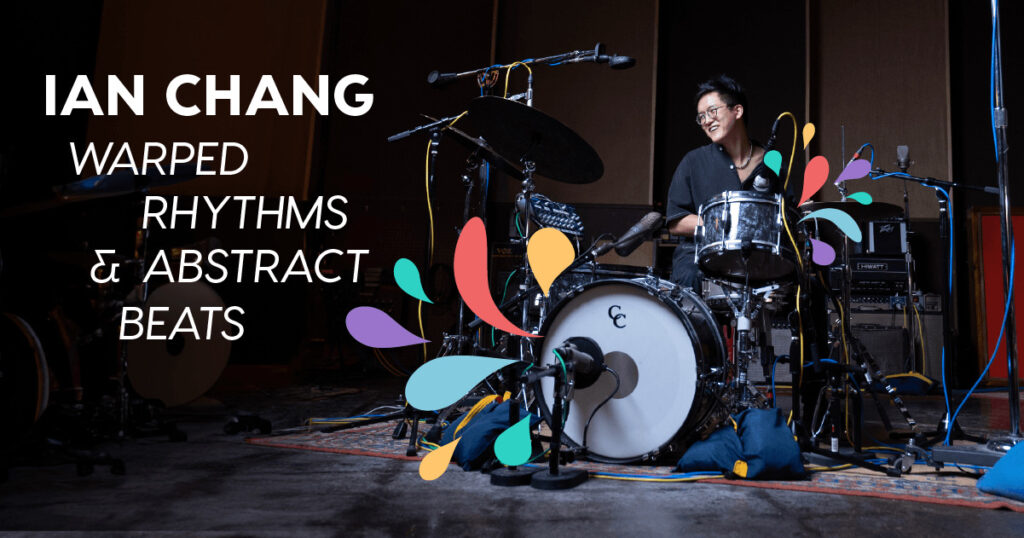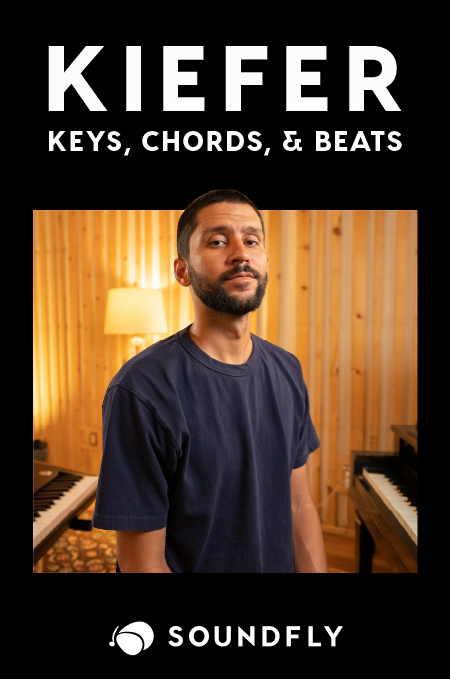+ Learn to craft more compelling beats and warped, broken rhythms with Son Lux’s Ian Chang. His innovative course is out now on Soundfly.
We’re all about these amazing beat makers who hail from Africa, Asia, and South America, and the rest of North America is captivated too. You need to listen to these seven electronic producers with a wholly unique sound and approach right now.
Ata Kak
The story behind this obscure mid ’90s musician is almost as good as the music. Brian Shimkowitz, a blogger at the time, found Ata Kak’s cassette at a flea market in Cape Coast, Ghana in 2002. “You may never hear anything like this elsewhere,” he declared in his very first blog post. “No one I know in Ghana listens to this frenetic left-field rap madness.”
When Shimkovitz launched Awesome Tapes as a record label in 2011, he started tracking down Ata Kak, but after years of searching he kept coming up empty. After four years though, he finally tracked down the man behind the mysteriously amazing music, Yaw Atta-Owusu. Yaw Atta-Owusu has been touring live ever since being discovered and is finally getting the international recognition he deserves.
Konono N°1
Speaking of international recognition, while they may not be an electronic group, per se, Kokono No.1’s approach to technology is reminiscent to early Suicide records, and they exist in a world of their own. At the core of their sound is three electric likembé combined to make a single instrument that is then amplified through home made speakers that illuminates its sound with cracks, pops, and hisses. Their frenetic energy and multitude of singers on each track makes you feel as if you’ve stumbled across them on the streets of Kinshasa.
The group was formed in 1966 by Mingiedi Mawangu, a member of the Zombo tribe. He began his musical career transcribing traditional Zombo music that was originally played by an ensemble of horns made from elephant tusks to be played on likembé. While he played with many different ensembles, it was his album, Congotronics (named after the way he’d jerry-rig different electronics together to make working parts) that eventually afforded him his international acclaim. In 2010, the band collaborated with Herbie Hancock on The Imagine Project and earned their first Grammy.
Mengyuan Xu
Mengyuan Xu is an electronic music artist from China who really leans into the musical aesthetic of traditional Chinese musical instrumentation. His heavy use of zithers and flutes gives his music a unique feel. I think it’s a really wonderful mix of old and new sounds to create something catchy and unique. A recent song of his, “Flame,” is more firmly rooted in the contemporary EDM pop sound, however it still has that Chinese opera influenced flavor that is undeniable.
+ Learn more on Soundfly: Craft more compelling beats with warped and off-kilter rhythms with a new online course by Ian Chang (of Son Lux).

Dead J
Dead J is one of the most innovative and prolific electronic musicians making music in China. His music is dancy, crunchy, sonically diverse, and all-together banging. He was originally inspired to make electronic music because he felt that rock music had stagnated. “One of the charming things about electronic music is its individualism,” according to Dead J, “just like when an artist creates a painting by themselves. So the possibilities for electronic musicians are huge.” I highly recommend his new album, Ting Tai Le Ge.
Alisu
Alisu is an IDM and dub producer who has been a major proponent of Chile’s underground music scene in the last few years. She uses both analog and digital synths so expect to hear everything from fat Moog thumps to wild FM synthesis sounds. What sets her apart is her creative and mesmerizing use of field recordings. There seems to be an underlying sense of nature interwoven into the very essence of her music. It’s almost impossible to describe but it’s as if she’s trying to pull us into an unknown tropical paradise.
Lara Nuh
Hailing from Peru, Lara Nuh is known for mixing Afro-Peruvian rhythms, traditional flute sounds, with house beats. Her first single, “Rumba De Muerte,” is a deep house jam perfect for that late summer celebrity-tinged pool party you’ve definitely never been to. The use of traditional chants as a rhythmic element is especially tasty, I find. I especially love her Sofar performance in Lima. I feel that her ability to move between different elements, while keeping this sense of traditional Peruvian music flowing through everything she’s doing, is really excellent.
Capsule
I would describe Capsule as sort of a Japanease version of France’s Justice. Producer Yasutaka Nakata provides the hard-hitting techno beats and Toshiko Koshijima sings those catchy, auto-tuned vocals. Their music is often licensed by Japanese TV shows so there is a chance that you’ve heard some of their songs as themes floating around. Plus, they released their fifteenth album (!) Wave Runner in 2015, so they’ve been on the scene for a minute. While their influences are varied, they use bossa beats, British acid house bass lines, and a variety of other notable source styles, but it would be difficult to describe their music as anything but simply their own.
Did you enjoy these tracks? Who are you listening to right now?
Don’t stop here!
Continue learning with hundreds of lessons on songwriting, mixing, DIY home recording and production, composing, beat making, and so much more in Soundfly’s courses with artists like RJD2, Ryan Lott, Kiefer, and Jlin: Rhythm, Variation, & Vulnerability.




